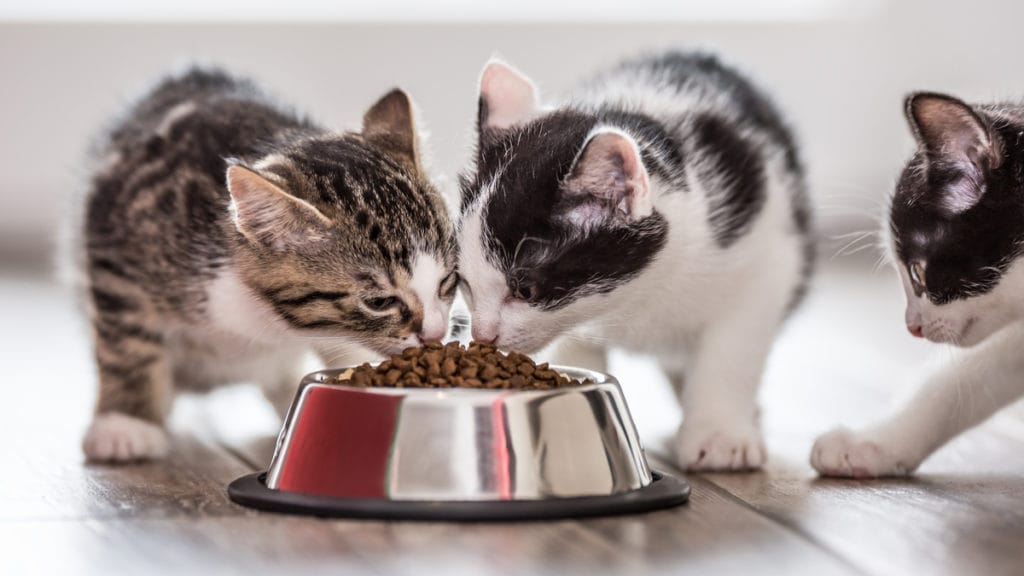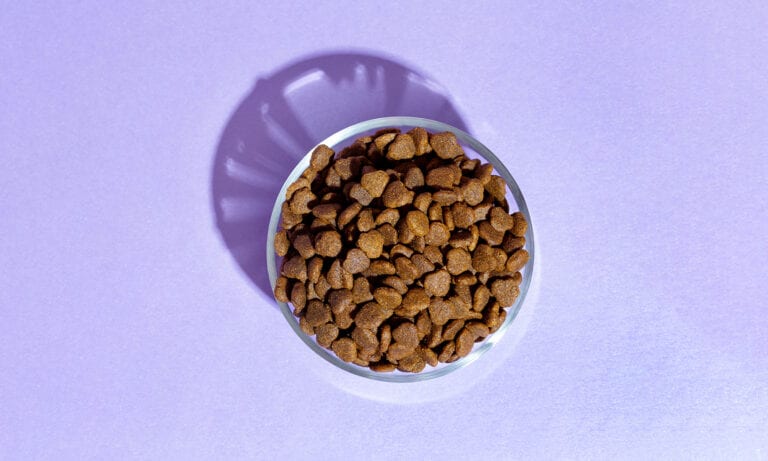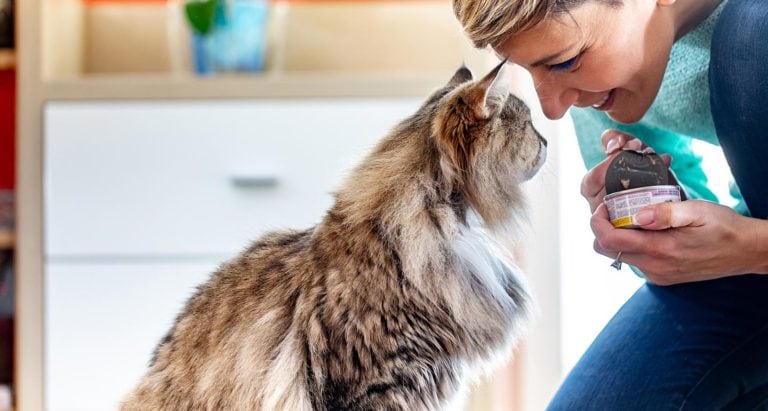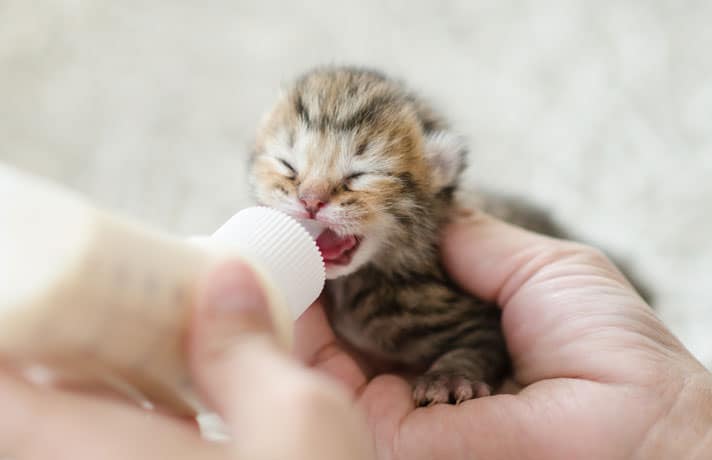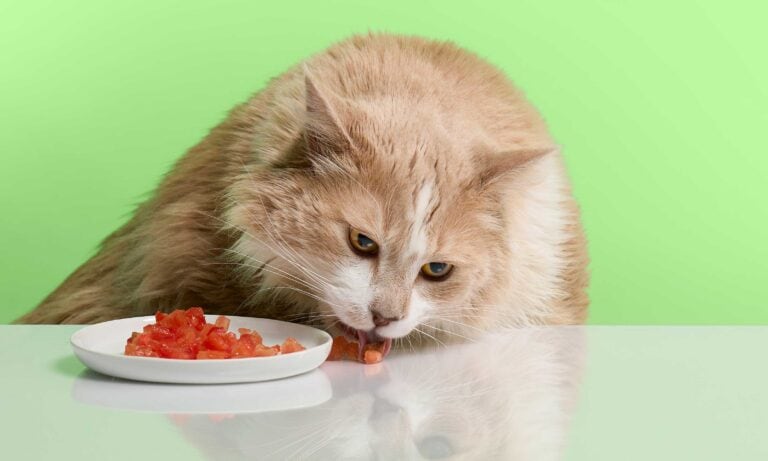Have you ever wondered if your cat gets bored of eating the same thing for every meal? If so, feeding your cat a rotational diet might be something your cat enjoys and even benefits from.
A rotational diet consists of varying proteins, different types of cat food (dry, canned, and dehydrated), or both. You may be interested in learning how to feed a cat a rotational diet for a couple of reasons.
In This Guide:
Why Feed Your Cat a Rotational Diet?
First, feeding your cat a rotational diet makes it easier to change foods in the future. Cats who eat only one type of food are more likely to refuse trying another. If your cat ever needs a specialty food, develops a food allergy, or his usual food is discontinued, you will have to convince him to eat something new.
Letting him go hungry until he gives up and eats the new diet is a dangerous proposition. It only takes cats a few days to develop hepatic lipidosis, also known as fatty liver, a potentially fatal condition that requires immediate treatment.
Second, cats who eat a rotational diet also are less likely to experience digestive upset when introduced to a new food. If your cat’s digestive system is accustomed to only one type of food, there’s more of a chance that he will suffer from vomiting or diarrhea if you run out of his favorite food and must buy something else in a pinch.
How To Start a Cat Rotational Diet
To avoid side effects from sudden diet changes, transition carefully between foods.
“With rotation, there is less of an issue, but typically it is done over 3–4 days or so by adding in increasing amounts of the new food while gradually decreasing amounts of old food,” says Joe Bartges, DVM, professor of internal medicine and nutrition at the University of Georgia’s College of Veterinary Medicine.
If your cat does experience digestive issues, you can try using a cat-specific probiotic, such as Purina® Pro Plan® FortiFlora® probiotic for cats, to help get his digestive system back on track. Probiotics also can boost your feline’s immune system, so you may want to make them a regular part of his diet.
Another way to coax your cat to try something new is to add his favorite fresh food treats. Scrambled eggs, tinned sardines, tuna, and a fish oil supplement (like Nutramax® Welactin® Omega-3 Fish Oil Cat Supplement) are aromatic additions that can help make any new food more palatable to a finicky feline.
There is no perfect frequency for rotating between foods. Some cats tolerate a new flavor each day; others prefer a change every few months. You can adjust the rotation schedule to suit your cat’s needs and preferences.
“It is good to rotate dry and canned products and to feed a mix of both,” Dr. Bartges says. “With canned food, it is easier as you can purchase a case with four or so different flavors. Dry food is a bit tougher, and often rotation means feeding a bag and then transitioning to a different flavor.
“If your cat likes wet foods, they probably will have a harder time eating dry foods, and vice versa,” he says. “But with determination and lots of patience, you can convince your kitty to expand [his] diet.”
A multi-pack like Weruva® variety pack makes it easy to change up your cat’s diet day to day. Look for dry foods with different protein sources to also make switching easier. For example, if your feline friend normally eats American Journey® Turkey & Chicken recipe, he may transition comfortably to the salmon recipe from the same brand.
“Many foods have what are called ‘product lines,’ meaning there are different flavors but the composition otherwise is similar between the products in the line,” Dr. Bartges says. “That helps quite a bit.”
When To Start a Cat Rotational Diet
The easiest time to transition your cat between foods is if you start early in your feline’s life. As a kitten, cats tend to become fixated on the diet they are fed most frequently, and he may only recognize that as a source of nourishment.
However, older cats can learn to accept new foods as well. Just remember that you’ll need patience and consistency.
“Cats are texture-driven and it can be very difficult to transition them,” Dr. Bartges says. “Sometimes it takes months.”
If your cat simply refuses to get onboard with the rotational diet, there’s no need to worry. Veterinarians have differing opinions on the necessity of rotating foods because there currently is no solid evidence that all cats can benefit from it if their favorite food already is nutritionally complete. By feeding your cat a high-quality cat food, he will not be missing out on essential vitamins or nutrients.
“My personal opinion is that rotation of diets is a good thing,” Dr. Bartges says. “It helps to minimize diet fixation, and if there are dietary issues it will dilute the effect.”
Expert input provided by Joe Bartges, DVM, professor of internal medicine and nutrition at the University of Georgia’s College of Veterinary Medicine.
This content was medically reviewed by a veterinarian.
Like this story? Check out more of our favorite reads:
Share:
